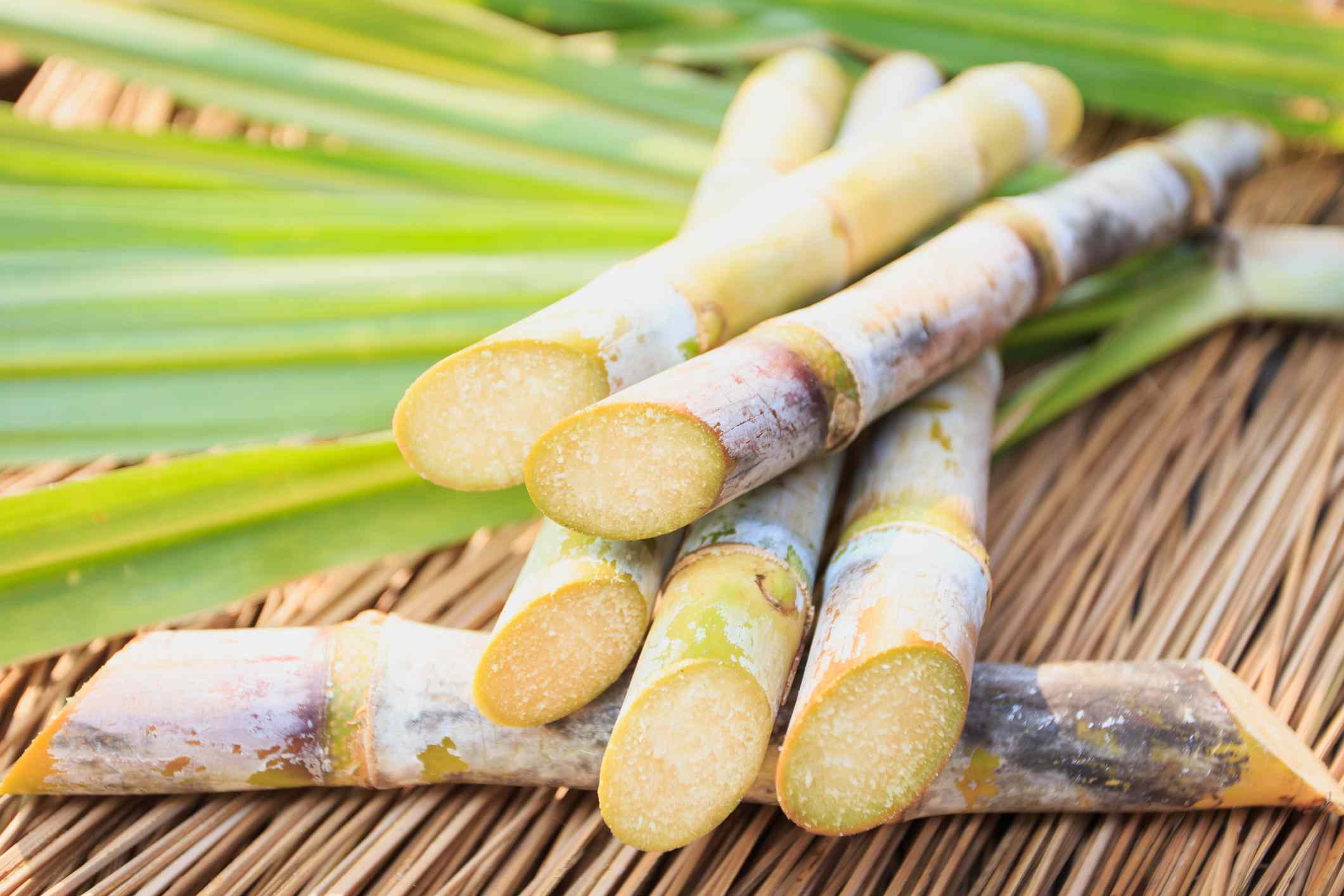A Thorough Overview to the Ecological Influence and Sustainability Practices in Cane Sugar Processing
The environmental effect of walking cane sugar handling presents a complicated range of difficulties that warrant cautious exam. From soil degradation and excessive water usage to the carbon footprint connected with farming and manufacturing, the effects of typical techniques are far-reaching. In contrast, the adoption of innovative sustainability steps uses a pathway towards much more liable manufacturing techniques. Comprehending the interplay between these problems is important for stakeholders in the market. What certain methods can be applied to strike an equilibrium in between efficiency and environmental stewardship? The solutions depend on a closer look at both the challenges and possible solutions.
Overview of Walking Cane Sugar Processing
Cane sugar processing includes a series of methodical steps that change sugarcane into refined sugar. Originally, gathered sugarcane is carried to refining centers, where it goes through cleaning to eliminate dirt and particles. Following this, the walking stick is squashed to extract juice, which is after that clarified by eliminating impurities with home heating and the enhancement of lime.
The clarified juice goes through dissipation, where water is eliminated to concentrate the sugar content. These crystals are separated from the staying syrup making use of centrifugation, resulting in raw sugar.
The end product is then dried and packaged for distribution. Throughout this entire process, preserving efficiency and quality assurance is important to make certain the sugar fulfills industry standards. Each action in walking stick sugar processing not only contributes to the last item but also has implications for resource use and waste generation, setting the stage for discussions on sustainability and ecological influences connected with sugar production.
Environmental Difficulties of Production
The production of cane sugar presents several significant ecological obstacles that warrant attention. One primary issue is the substantial use agrochemicals, including chemicals and plant foods, which can cause soil destruction, biodiversity loss, and contamination of neighborhood water resources. The overflow from sugarcane fields typically carries these chemicals into neighboring communities, disrupting marine life and impacting the health of communities reliant on these water bodies.
An additional difficulty is the high energy consumption connected with sugarcane handling. The boiling and refining phases need substantial heat, mostly generated by melting fossil gas, adding to greenhouse gas emissions. Furthermore, the large acreage required for sugarcane farming can cause deforestation and environment damage, further exacerbating environment change and harmful wild animals.
Additionally, the labor practices in some areas raise moral issues, as employees may encounter bad working problems and insufficient salaries. This situation usually continues a cycle of destitution in regional areas. Cane Sugar Processing. Attending to these ecological difficulties is critical for establishing more lasting practices in walking stick sugar manufacturing, ultimately profiting both the setting and the communities associated with this industry
Water and Land Use Impact
Water sources and land usage are vital elements in the cane sugar market that significantly affect the setting. The growing of sugarcane needs considerable water input, with quotes suggesting that it can take in approximately 2,000 litres of water per kg of sugar produced. This extensive usage of use this link water usually leads to exhaustion of neighborhood water sources, influencing not only the sugarcane haciendas yet likewise bordering environments and neighborhoods that depend on the exact same water resources for farming and residential usage.

Furthermore, land use for sugarcane cultivation can lead to logging and the conversion of natural environments right into monoculture vineyards. This practice reduces biodiversity, interrupts neighborhood ecological communities, and adds to soil destruction. The expansion of sugarcane fields frequently trespasses on important agricultural land, producing competitors for resources between food and biofuel production.
Sustainable methods, such as optimizing watering methods and executing crop rotation, are important to alleviate these effects. By taking on much more reliable water use and land management approaches, the cane sugar market can reduce its eco-friendly impact, making sure a balance in between farming productivity and ecological conservation.
Greenhouse Gas Emissions
Greenhouse gas emissions stand for a significant environmental issue within the cane sugar handling sector, especially as farming techniques increase to fulfill worldwide need. The farming of sugarcane, a plant that grows in tropical climates, counts greatly on artificial plant foods and chemicals, which add to nitrous oxide discharges. Furthermore, land-use adjustments, consisting of logging for brand-new sugarcane vineyards, release co2 saved in plants and dirt.
Throughout handling, energy consumption is an additional major resource of greenhouse gas exhausts - Cane Sugar Processing. Numerous sugar mills utilize nonrenewable fuel sources to power equipment and generate warm, resulting in significant carbon why not try these out footprints. Additionally, the transportation of raw sugarcane and ended up items includes layers of discharges through gas burning in automobiles
This involves reviewing current farming techniques, processing approaches, and transport systems to determine areas for renovation and reduction. Dealing with greenhouse gas emissions is important for promoting a more sustainable walking stick sugar industry in a changing climate.

Lasting Practices and Innovations
Lasting techniques and advancements are significantly vital in the cane sugar processing sector as stakeholders seek to reduce environmental effects while keeping performance. One considerable improvement is the execution of integrated plant monitoring, which optimizes source usage by incorporating dirt monitoring, parasite control, and crop turning strategies. This strategy boosts return while decreasing chemical inputs and protecting dirt health.
Additionally, the fostering of eco-friendly energy sources, such as biomass from sugarcane residues, has actually gained grip - Cane Sugar Processing. By converting waste items into power, processing facilities can decrease their dependence on nonrenewable fuel sources, thereby reducing greenhouse gas discharges
Water management methods have likewise seen improvements through the recycling and reusing of water in handling plants, considerably reducing freshwater usage. Innovations in innovation, such as accuracy farming, enable farmers to check crop health and resource usage a lot more properly, making sure lasting farming techniques.
In addition, certification programs like Fair Trade and Rainforest Alliance encourage ecologically responsible farming methods and promote social equity within the supply chain. By accepting these sustainable methods and advancements, the walking stick sugar handling market can improve its durability and contribute positively to environmental stewardship.
Final Thought
The environmental impact of cane sugar processing offers substantial obstacles, consisting of dirt destruction, high water usage, and greenhouse gas discharges, together with honest issues associated with labor practices. Addressing these concerns via lasting methods, such as incorporated crop management, renewable resource fostering, and water recycling, is necessary. By promoting socially equitable and environmentally responsible approaches in sugar production, the industry can reduce its damaging results, guaranteeing an extra lasting future for both environments and neighborhoods included in this sector.
Walking cane sugar processing involves a collection of systematic helpful hints actions that transform sugarcane right into refined sugar. Each action in walking stick sugar handling not only contributes to the last item however also has ramifications for resource usage and waste generation, setting the phase for discussions on sustainability and ecological effects linked with sugar production.
Greenhouse gas exhausts represent a substantial environmental problem within the cane sugar handling industry, especially as agricultural methods increase to fulfill worldwide need.Sustainable methods and innovations are significantly vital in the walking stick sugar handling industry as stakeholders look for to lower environmental effects while keeping productivity.The ecological influence of walking stick sugar handling presents significant difficulties, consisting of soil degradation, high water usage, and greenhouse gas emissions, together with honest problems related to labor methods.